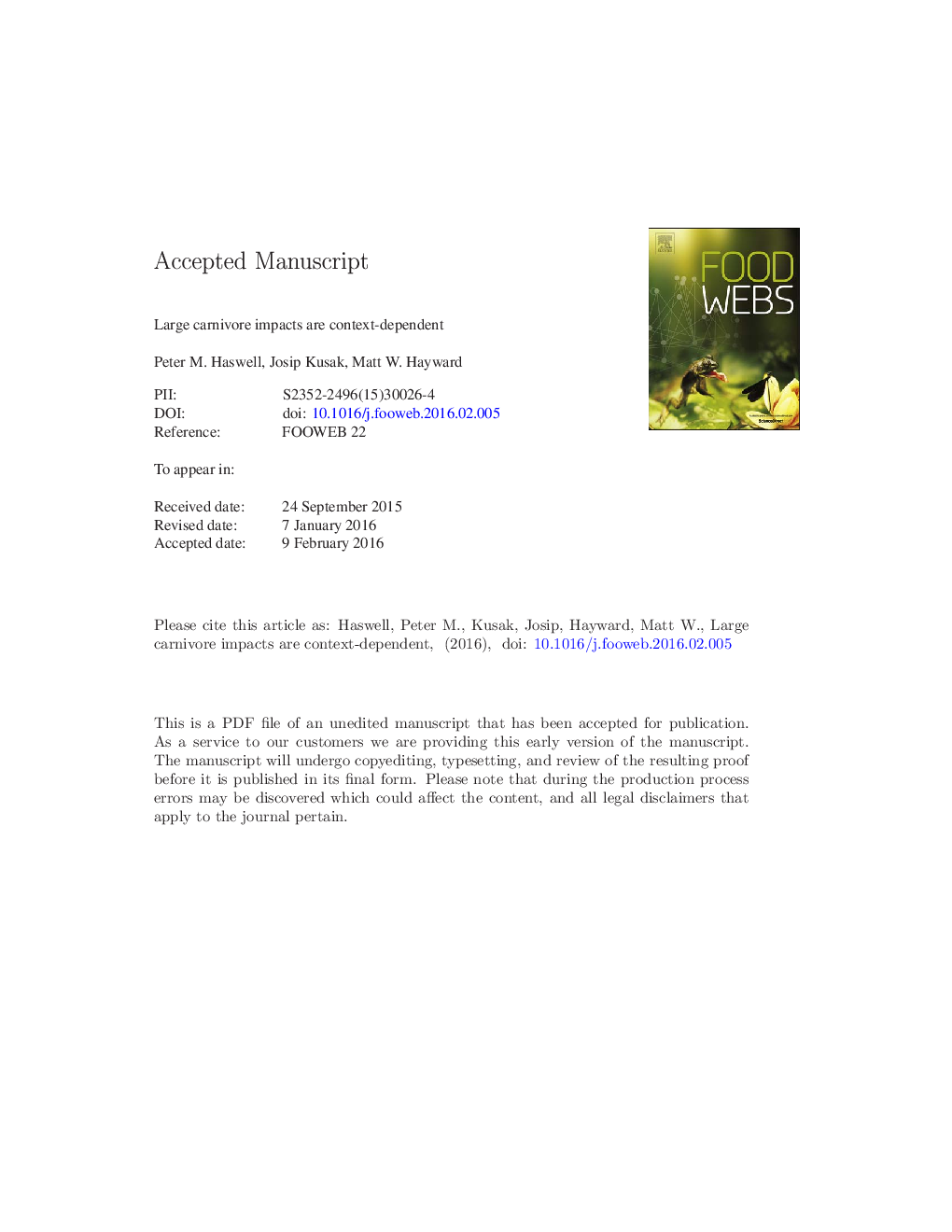| Article ID | Journal | Published Year | Pages | File Type |
|---|---|---|---|---|
| 5759817 | Food Webs | 2017 | 31 Pages |
Abstract
Interactions between large carnivores and other species may be responsible for impacts that are disproportionately large relative to their density. Context-dependent interactions between species are common but often poorly described. Caution must be expressed in seeing apex predators as ecological saviours because ecosystem services may not universally apply, particularly if inhibited by anthropogenic activity. This review examines how the impacts of large carnivores are affected by four major contexts (species assemblage, environmental productivity, landscape, predation risk) and the potential for human interference to affect these contexts. Humans are the most dominant landscape and resource user on the planet and our management intervention affects species composition, resource availability, demography, behaviour and interspecific trophic dynamics. Humans can impact large carnivores in much the same way these apex predators impact mesopredators and prey species - through density-mediated (consumptive) and trait/behaviourally-mediated (non-consumptive) pathways. Mesopredator and large herbivore suppression or release, intraguild competition and predation pressure may all be affected by human context. The aim of restoring 'natural' systems is somewhat problematic and not always pragmatic. Interspecific interactions are influenced by context, and humans are often the dominant driver in forming context. If management and conservation goals are to be achieved then it is pivotal to understand how humans influence trophic interactions and how trophic interactions are affected by context. Trade-offs and management interventions can only be implemented successfully if the intricacies of food webs are properly understood.
Related Topics
Life Sciences
Agricultural and Biological Sciences
Agricultural and Biological Sciences (General)
Authors
Peter M. Haswell, Josip Kusak, Matt W. Hayward,
